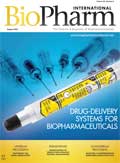Finding a Cure for Early Pipeline Failures
FDA notes progress in drug development, but cites scientific and funding roadblocks.
In July 2015, Stephen M. Ostroff, acting commissioner of FDA, marked the third anniversary of the Food and Drug Administration Safety and Innovation Act (FDASIA) by citing the agency’s achievements in promoting drug safety, accelerating drug approvals, improving stakeholder involvement, and securing the supply chain (1).
Ostroff noted that since 2012, the agency has issued more than 35 draft and final guidance documents and more than 10 proposed and final rules. The number of drug shortages dropped from 282 in 2012 to 101 in 2014, an improvement attributed to FDA action.
The FDASIA provision to create the Breakthrough Therapy designation may be the most significant. Ostroff noted that as of June 2015, FDA had received 315 requests for the special designation, and 93 drugs and biologics had been granted breakthrough status. To date, 26 breakthrough therapy drug/indication combinations have been approved and are on the market providing treatments for both rare diseases and common conditions.
FDASIA also gave FDA new authorities to protect the US drug supply chain, improve communication and enrollment in clinical trials, and increase patient engagement.
In a separate whitepaper (2), FDA noted that improvements in the final stage of drug development have reduced drug approval times. The United States leads the world in the introduction of novel drugs, FDA reports, giving Americans first access to new treatments and cures.
Overall pharmaceutical productivity has fallen, however, because the cost of getting a drug from discovery to submission of a marketing application has escalated and failure rates have grown, FDA reports in the whitepaper. Despite advances in developing targeted medicines for cancer and HIV/AIDs, an “inadequate scientific understanding of specific diseases is likely to remain the most important limiting factor for developing targeted therapies in other areas” (2).
The whitepaper noted FDA’s activity to “modernize and speed the earlier phases of drug development” through collaborations on the science of biomarkers and surrogate endpoints and working with drug manufacturers and patient groups on clinical trial design. Efforts by industry groups to work together are necessary and commendable. The bottom line, however, is that funding to conduct the research is needed.
Ostroff noted the importance of user fees to meet the agency’s responsibilities, in light of budgetary challenges. FDA kicked off efforts for the next reauthorization of the user fee programs, holding stakeholder meetings in June 2015. In addition, discussion about the 21st Century Cures Act has directed attention to the ongoing need for disease and drug research and renewed the debate of who will pay for the associated costs.
Special interest groups-including the Pharmaceutical Research and Manufacturers of America, Biotechnology Industry Organization, Generic Pharmaceutical Association, and the Pharma and Biopharma Outsourcing Association-are expected to offer statements, testimony, press releases, and interviews positioning their members’ interests. Patient groups also offered their perspectives. Throw in the polarized factions in Congress and presidential hopefuls, and the upcoming debates should be interesting.
References
1. S. Ostroff, “Celebrating the 3rd Anniversary of the FDA Safety and Innovation Act,” FDA Voice, online July 9, 2015, blogs.fda.gov/FDAvoice/index.php, accessed July 27, 2015.
2. FDA, “Targeted Drug Development: Why Are Many Diseases Lagging Behind?” Whitepaper (Rockville, MD, July 2015).
Article DetailsBioPharm International
Vol. 28, No. 8
Page: 6
Citation:
When referring to this article, please cite it as R. Peters, “Finding a Cure for Early Pipeline Failures,” BioPharm International 28 (8) 2015.
